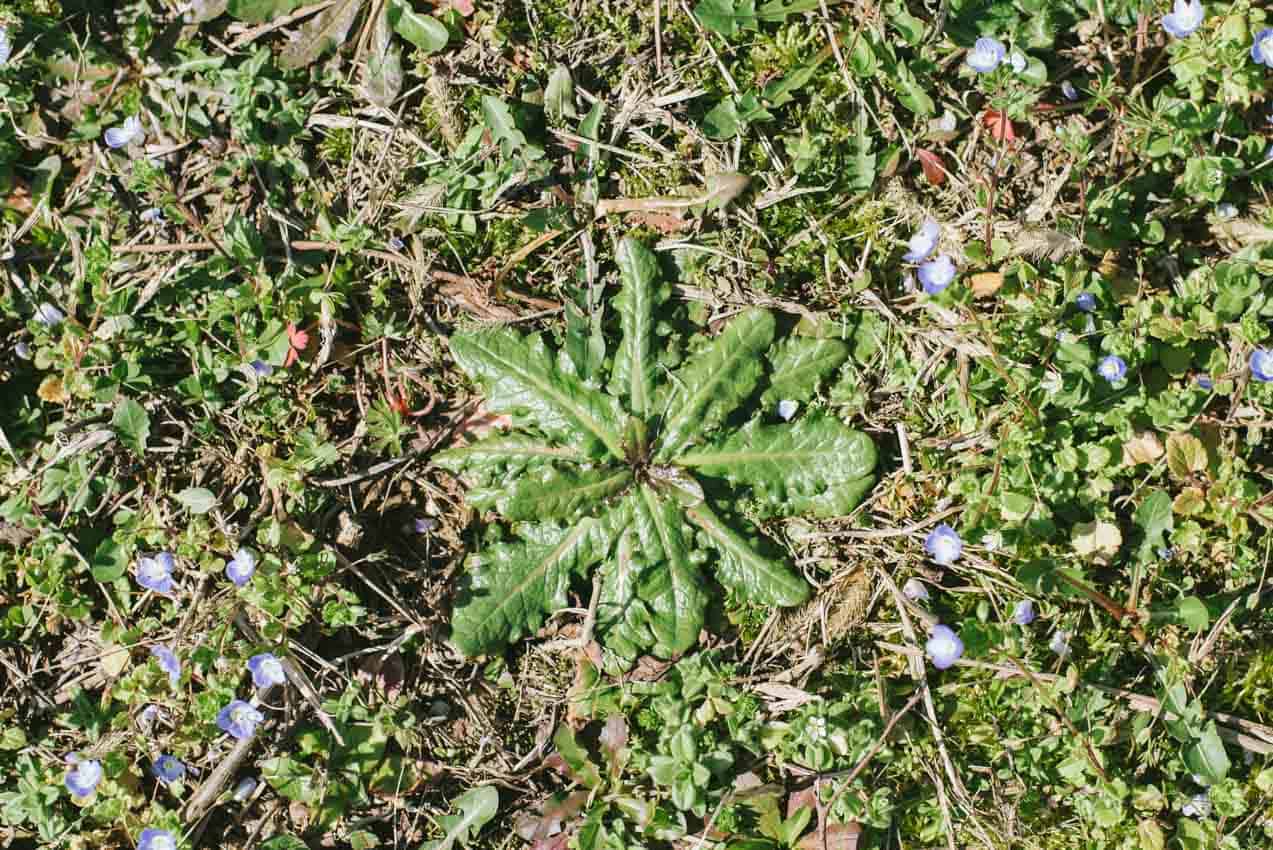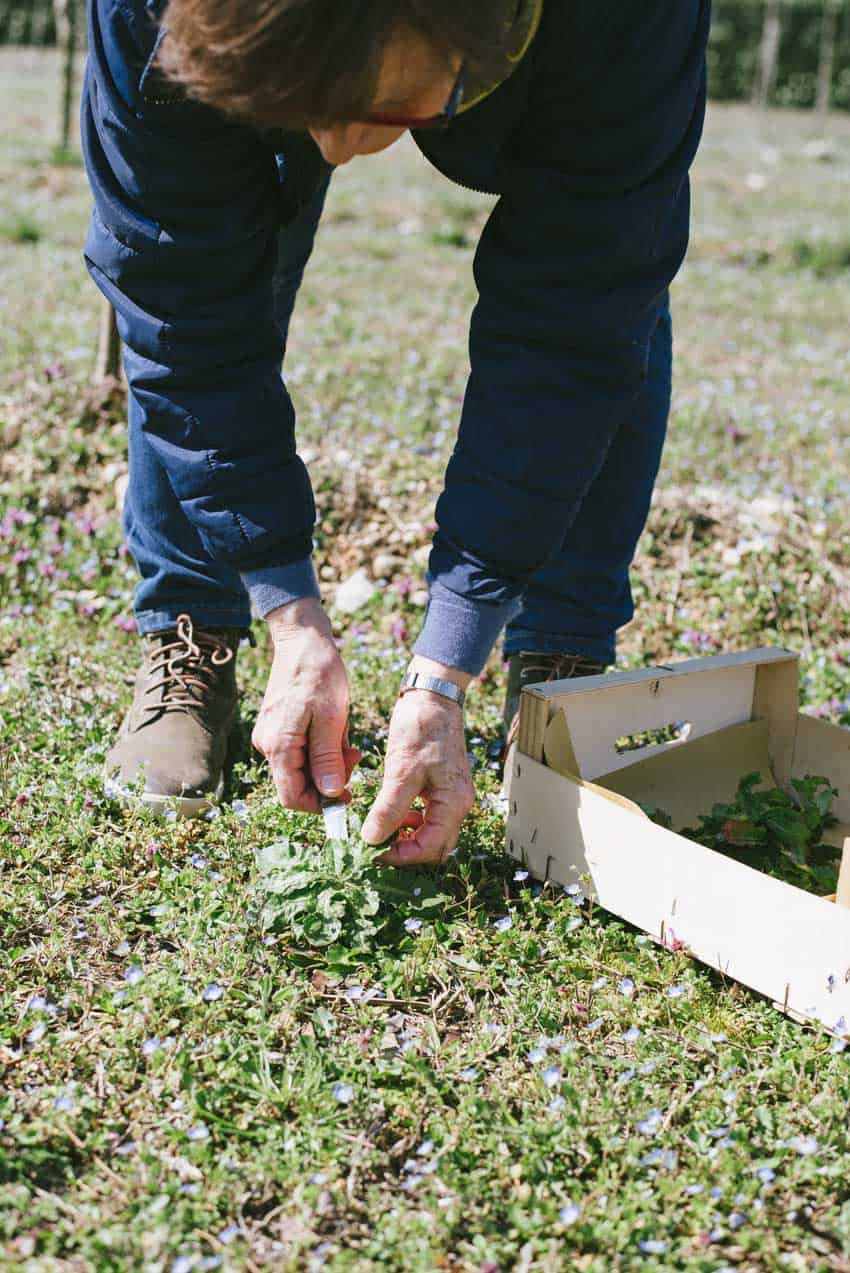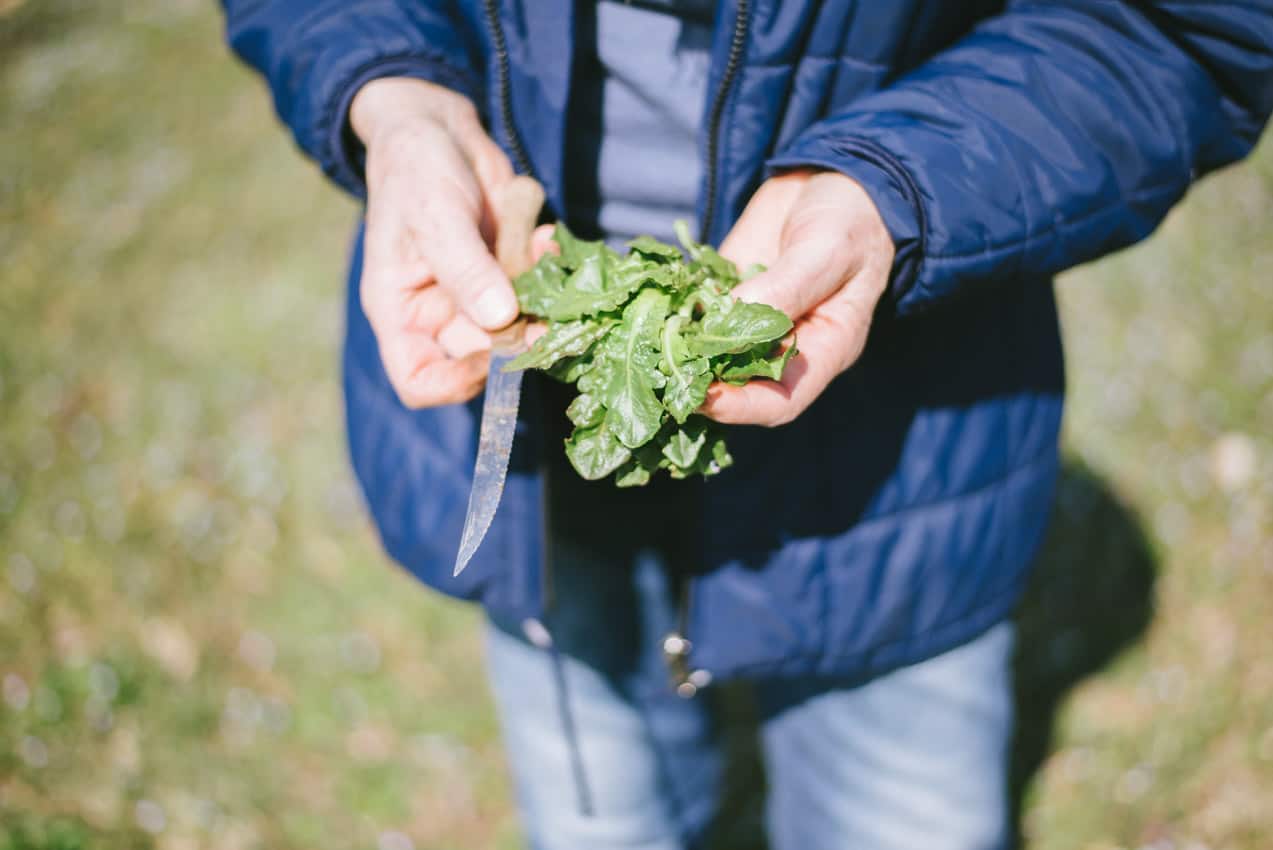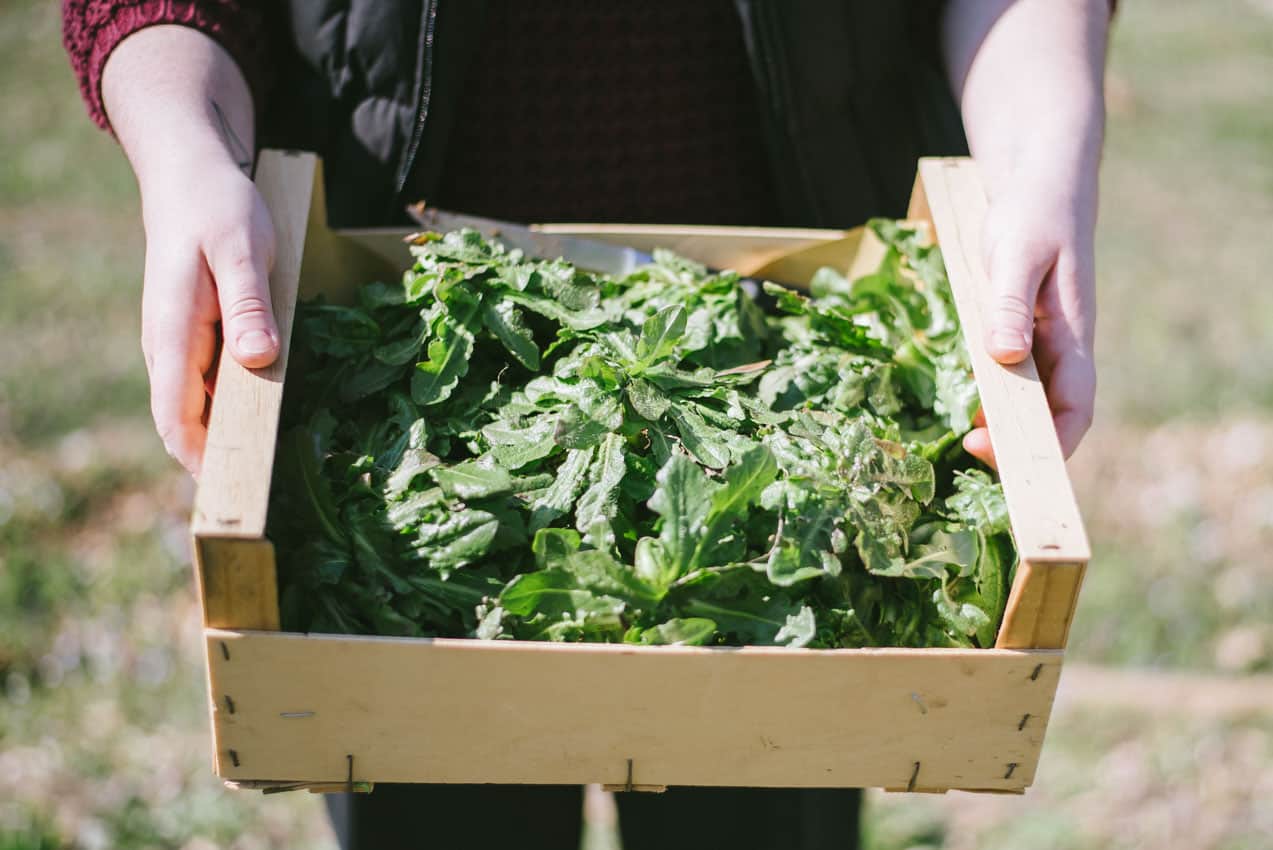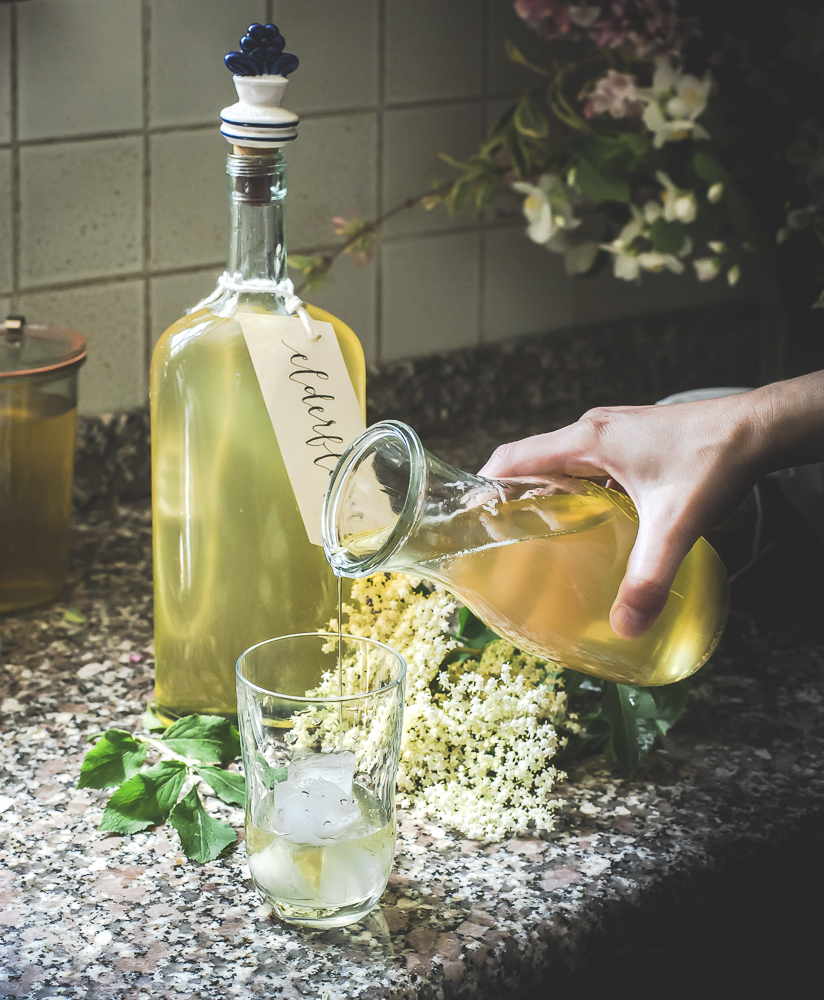
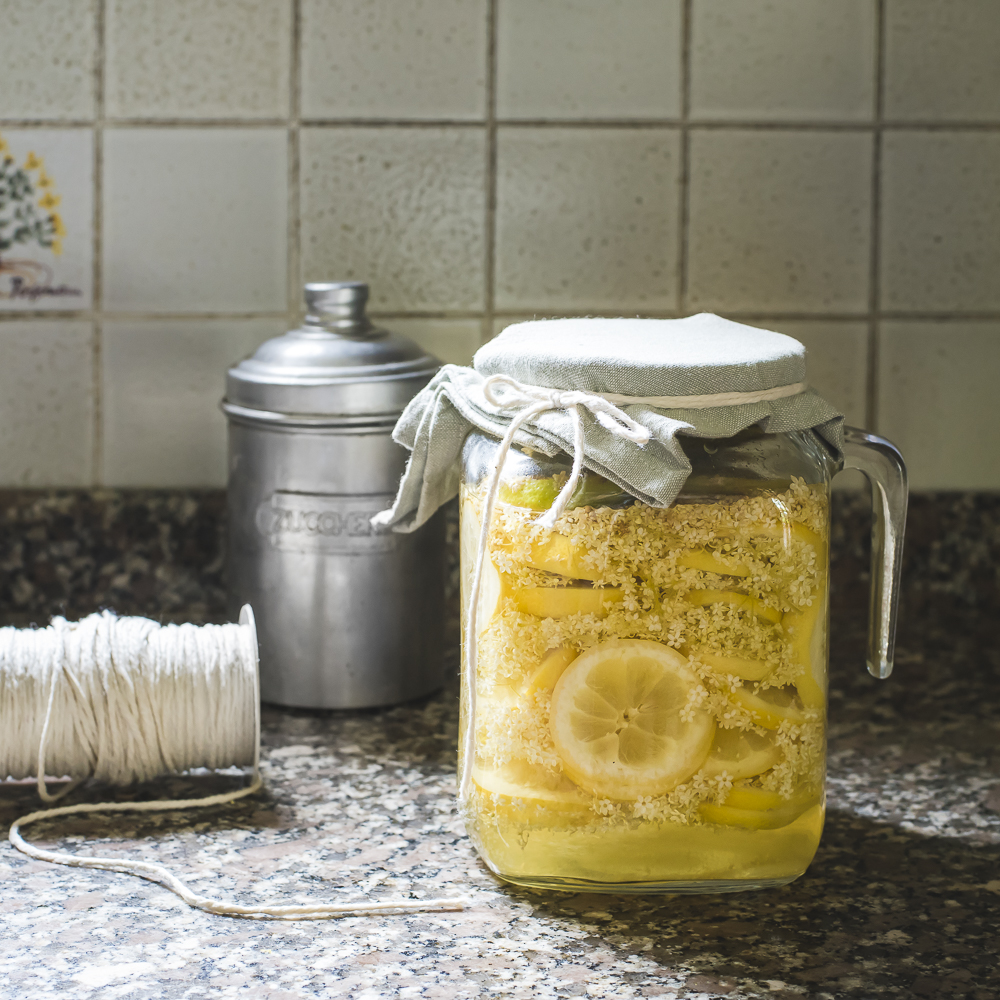
More often than not, the extraordinary can be found in the small and simple things — the ones we sometimes overlook.
In this region of Italy, elder trees are abundant and usually grow along the sides of roads and the perimeter of cultivated fields. When I was little, I had fun spotting them from the backseat of my parents’ car. It wasn’t always easy to recognize them from afar because sometimes they’d grow close to acacia trees (both of the plants’ blossoms are clusters of small white flowers). In my adult life, I never thought much of elder trees when I saw them blooming in spring — except they would bring back memories of my little “I spy” game.
Last summer, I tasted elderflower syrup for the first time during our vacation in South Tyrol. It was love at first sip! How can an extraordinarily delicate summery flavor come from such a tiny, common, almost mundane flower? Nature is indeed incredible.
I look at elder trees with different eyes now and I couldn’t resist the idea of making my very own elderflower syrup. I went on a little foraging expedition in fields behind my parents’ house, and I filled a couple of bags with these beautiful, scented flowers. It just took just a bit of cleaning, a lot of sugar, and many lemons. After letting it all sit in a large jar full of water for 48 hours, I filtered everything into a pot, added sugar and then brought it to a boil and cooked for another 5 minutes. I ended up with a delicious syrup that got me totally hooked. I’m obsessed!
WAYS TO ENJOY ELDERFLOWER SYRUP
Here are some ideas on how to use it your elderflower syrup…
- Elderflower infused water: water, 1-2 Tbsp of elderflower syrup, ice cubes, and a mint leaf.
- Elderflower lemonade: water, lemon juice, 1-2 Tbsp of elderflower syrup, ice cubes.
- In cocktails: mix it with club soda or sparkling water, and top off with gin, vodka or prosecco (the Hugo cocktail is becoming a popular summer drink here in Italy!).
- In desserts and cakes or simply in your whipped cream, to add a hint of delicate floral flavor. This copycat royal wedding cake made with elderflower and lemon is definitely something I want to make soon!
Before I leave you the recipe, here are some foraging tips.
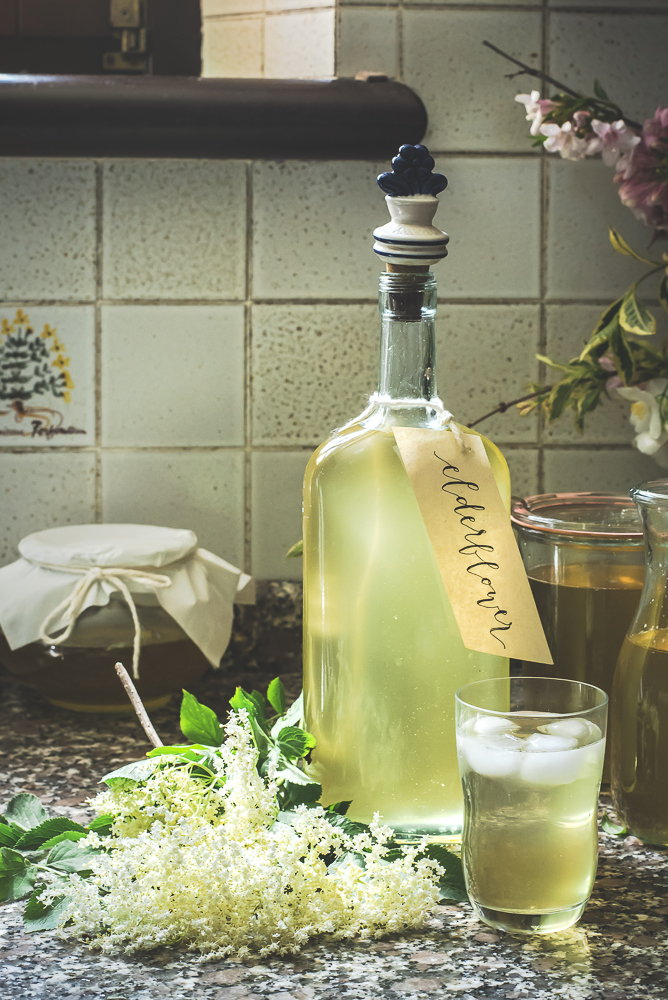
HOW TO RECOGNIZE ELDERFLOWER
Elderflowers come from the elder (latin: Sambucus nigra). This plant grows all over the wold, and most commonly in the Northern hemisphere. The elder can be a shrub or tree and it can grow in a variety of conditions, but usually prefers sunny locations, like roadside hedgerows.
Elders produce flat-topped clusters of tiny, creamy-white flowers which usually bloom in late spring. You can easily recognize them for their sweet fragrance which inevitably attracts a lot of insects. Another way to recognize the elder tree is by looking at its leaves: they should be feather-shaped with toothed edges.
This botanical illustration is pretty clear and you can read more detailed information about this plant here.
HOW TO FORAGE FOR ELDERFLOWER
Pick a sunny and dry day and search in open fields, possibly away from traffic fumes and pesticide-free areas. Look for fresh blooms with open creamy white flowers, with soft yellow pollen. Remember these flowers wither fast, so make sure you use them soon after you harvest them.
Gently shake the flower heads to remove any bugs and rinse them under cold water before using. Make sure you remove as much of the green stems as possible. While the flowers are edible, the leaves, stems, sticks, and roots are toxic and should be removed and avoided.
To find out how to make elderflower syrup, scroll down below to the recipe. I hope I instilled in you some curiosity for these wonderful flowers!
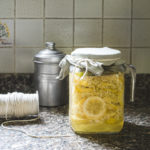
Elderflower Syrup (Sciroppo di Fiori di Sambuco)
Ingredients
- 15-20 elderflower heads
- 6 organic lemons
- ½ – ¾ liter (3 c) water
- 1 kg (5 c) sugar
- 1 tsp apple cider vinegar
Instructions
-
Gently shake the flower heads to remove any bugs. Rinse the flowers under cold water and remove all the green stems, keeping just the little flowers. While the flowers are edible, the stems and the leaves are toxic.
-
Gently scrub the lemons under cold water. Remove the ends and cut the lemons in slices.
-
In a large glass jar, alternate a handful of flowers with a few slices of lemon, and top the last layer of flowers with lemons. Pour the water and gently press the lemons and flowers down to make sure they’re submerged in water. Close the lid or cover the jar with plastic film. Let rest in a cool place for 48 hours.
-
Using a clean cotton dishtowel, strain your content into a medium pot. Give it a nice squeeze to get as much liquid as possible, making sure you squeeze the lemons, too. Add sugar and vinegar, and bring to a boil. Turn down the heat and cook gently for another 5 minutes.
-
Let the syrup cool off and strain it into a bottle or glass container. Store it in the fridge.
-
*The best and easiest way to enjoy elderflower syrup is to dilute it in water. A couple of tablespoons of syrup in a glass of water should be enough, but you can play with the quantity according to your taste. You can also add a few ice cubes and a leaf of mint.
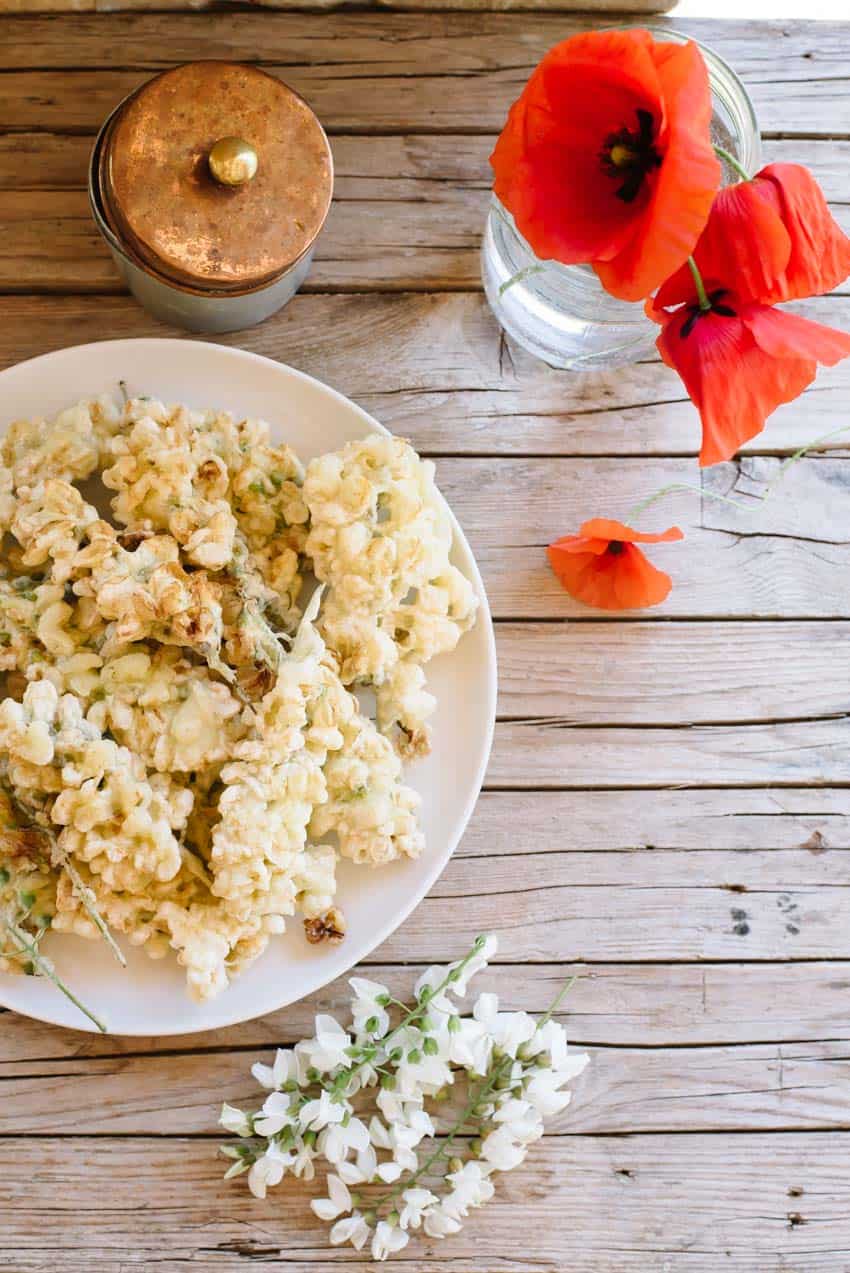
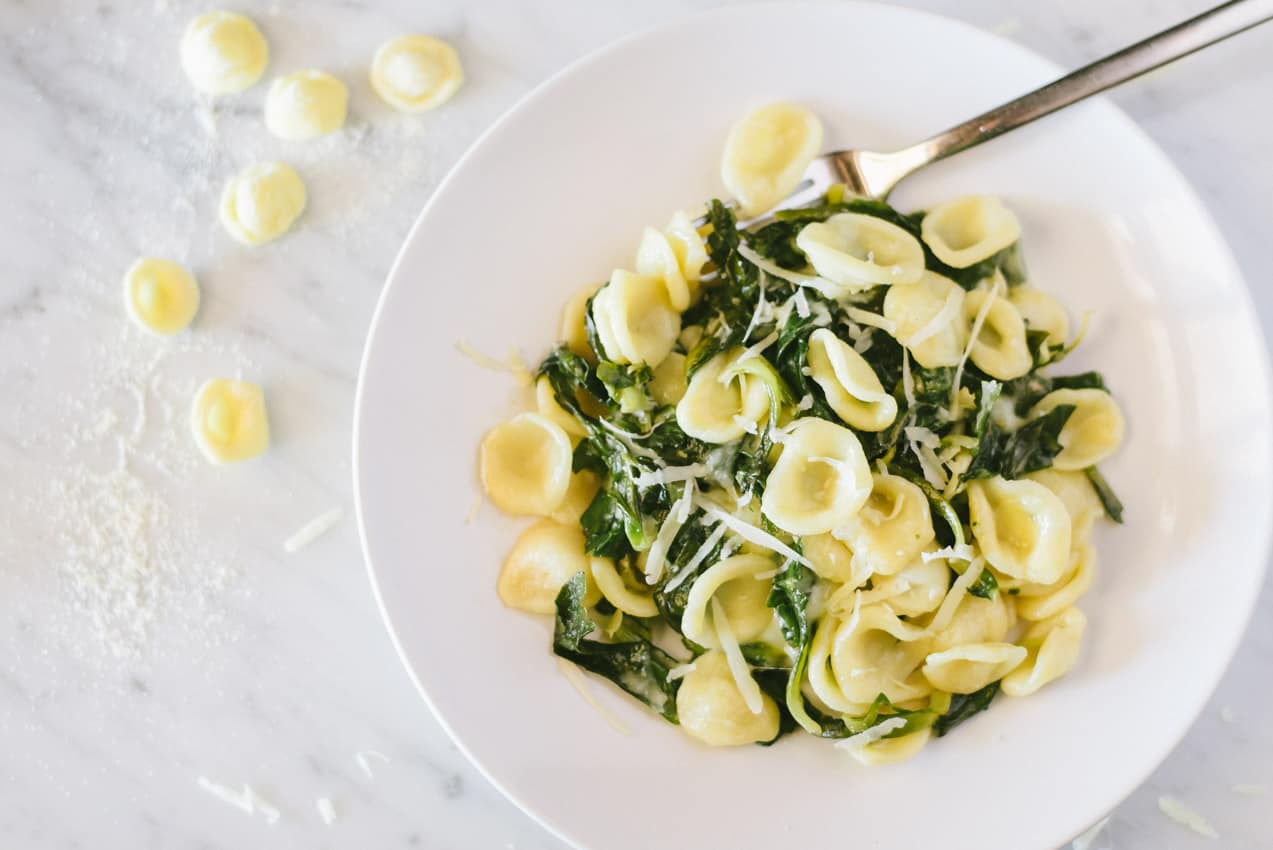
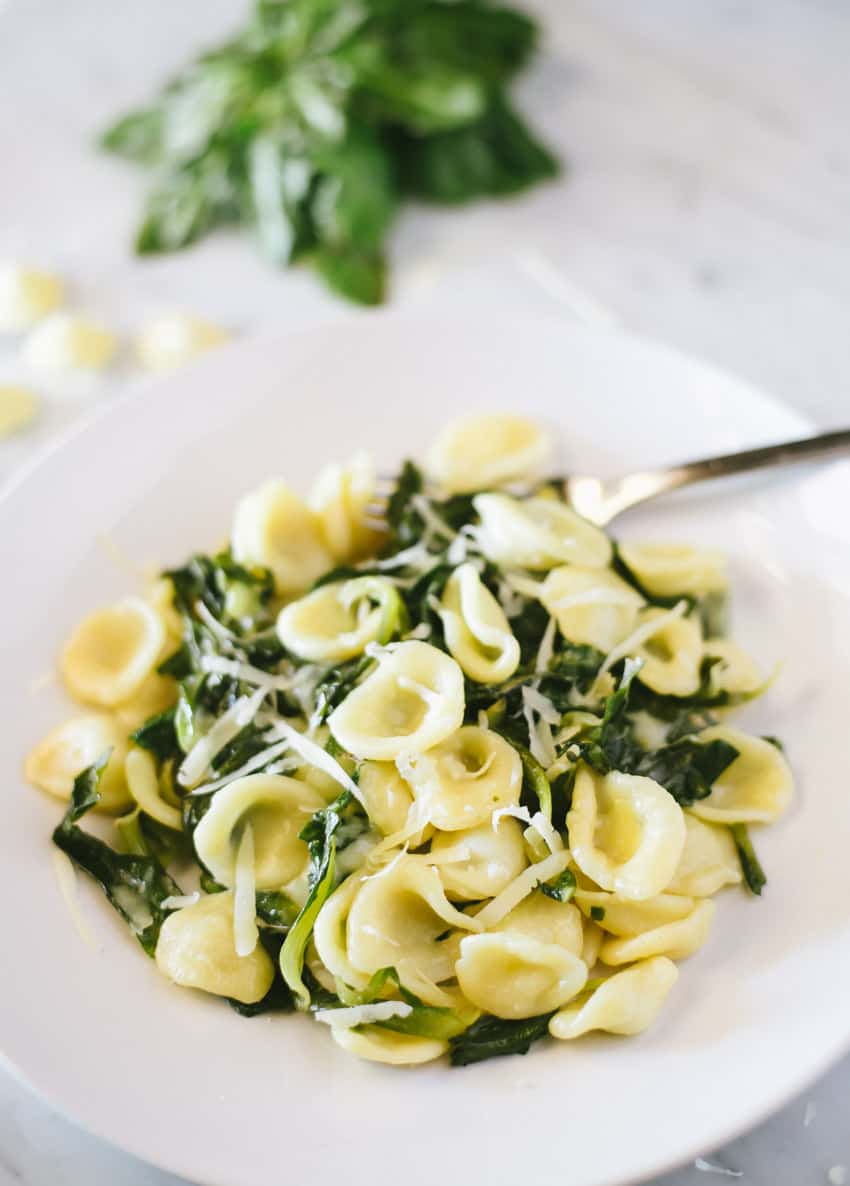 Have you ever seen those tall yellow flowers that grow wild in open fields or lawns? It’s cat’s ear (
Have you ever seen those tall yellow flowers that grow wild in open fields or lawns? It’s cat’s ear (